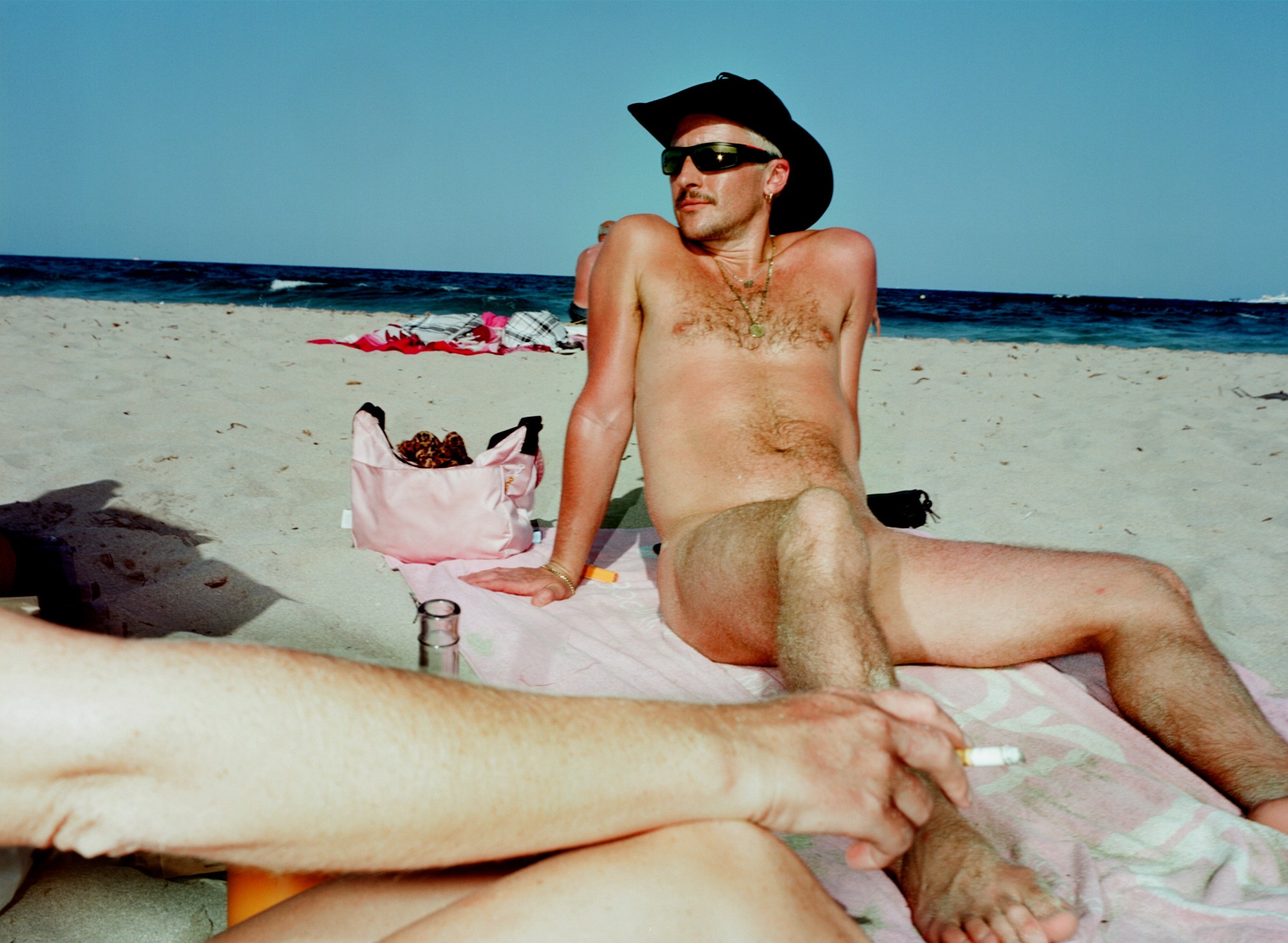Queer artists have long headed towards nature to capture subjects like them. There’s a deep-rooted history that ties the two together. Harry Carr noted this when he started work on his photo project tied to the beaches where queer men congregate. What he found when he got there, armed with his camera, was a collection of people open to being photographed in gorgeous, joyous — often naked — states.
While queer art can sometimes harbour a morose sense of darkness, or is dulled and de-sexualised under soft pastels, Harry’s work carries a lurid feeling, like the work of Tom Bianchi, the legendary documentarian of gay America in the 20th century. The bodies he photographs are unposed; the colours saturated and glossy under the full beam of the sun.
Here, he discusses the motivations to make the series, the way in which he frames naked queer bodies, and how he first interacted with them as he created the series.
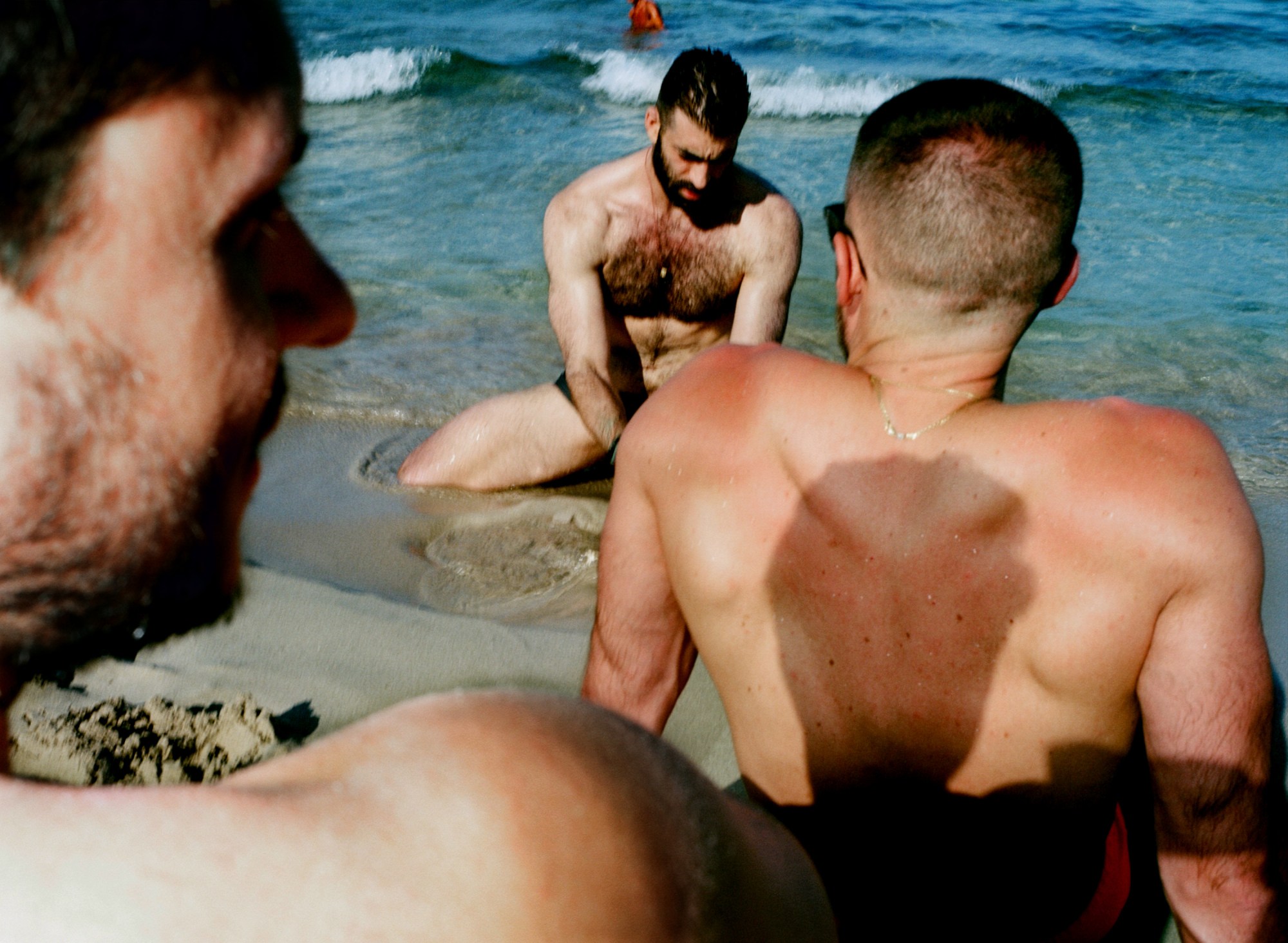
You’ve said this project was inspired by your desire to create a documentation of queer life. Do you have any historical examples of photographers whose documentations of queer life you admired?
The work of Peter Hujar, Sunil Gupta and Tom Bianchi led me to want to continue the tradition of documenting queer lives. These artists largely worked in 70s New York — sometimes referred to as ‘the gay golden era’. My own series seeks to explore what life looks like now, shifting away from black-and-white into the rich colours we find at the beach. I saw queer people communing in much the same way they appear to in those artists’ work, which was sort of comforting and felt connected to queer ancestry.
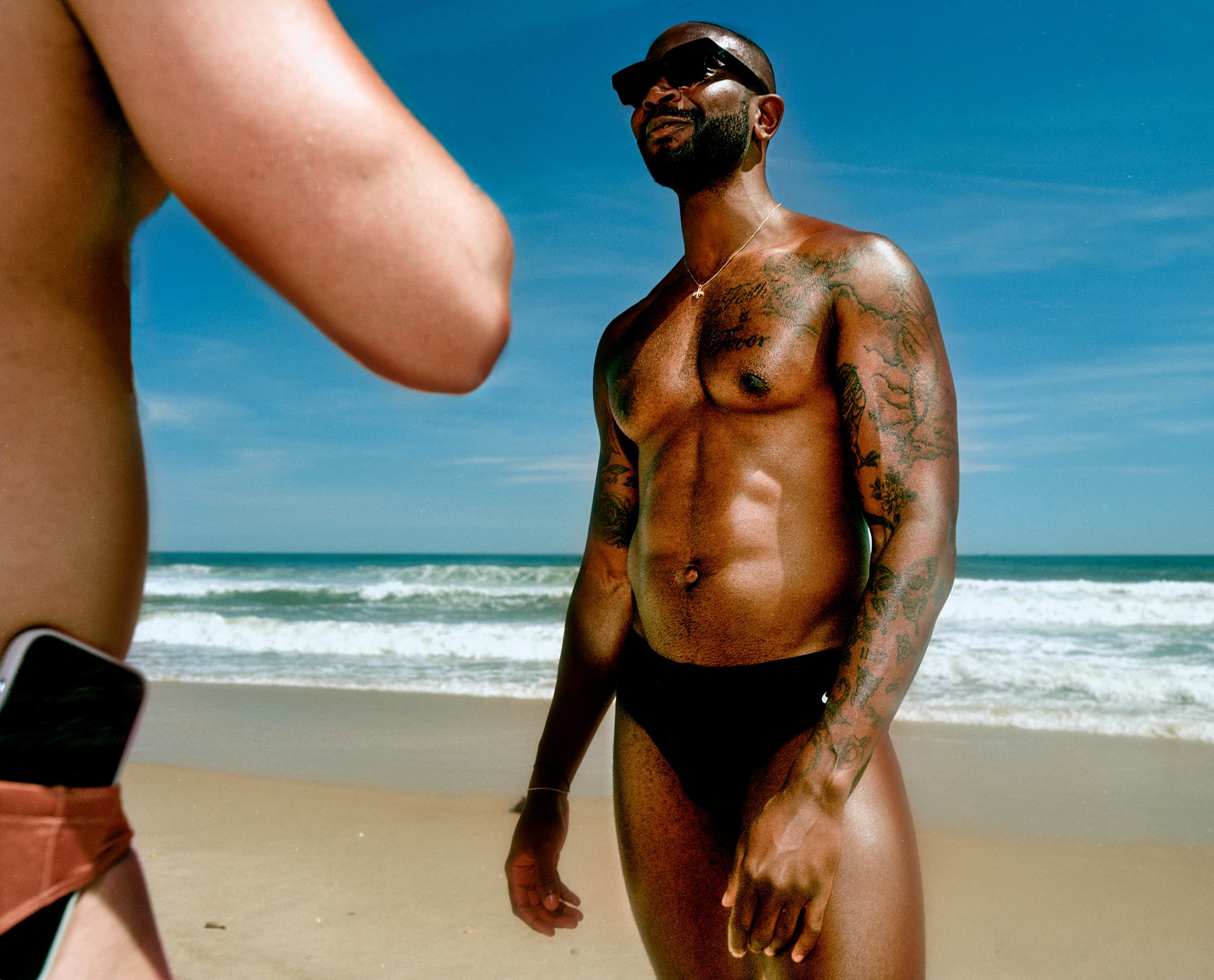
Can you talk about where the series began? Did you take the first image with the intention of it being a series?
I was shooting in New York and was encouraged by my agent at the time to take pictures on Fire Island. I went mostly out of curiosity given its history as a queer haven, as opposed to starting any kind of series. It’s an eccentric place: car-less, connected by boardwalks — essentially a bug-infested forest with an endless beach on one side. I went alone, and as I began to approach people to take their picture, I was struck by how open subjects were. Photographing them often led to brief but meaningful insights into their lives and circumstances. I left feeling I had engaged in a whole cross section of queer folks via my camera, and so decided to continue it as a series across multiple queer destinations.
The series features nude bodies, but they’re often obscured. It has an element of joy to it, beyond the carnal. Can you unpack your desire to create something that featured queer bodies in a primal state, but not necessarily a sexualised one?
I didn’t want to remove sexuality entirely, but was eager to explore whether queer nude bodies can be documented in a way that wasn’t putting sexual desire at the forefront. Cruising is an integral activity to most of the sites I shot at, but it was the in-between moments I found more poignant in terms of what simply being queer and at leisure can look like. Queer bodies are often eroticised when photographed nude — but nudity itself doesn’t necessitate a comment on the how, where or why of queer sex. Obscuring parts of the subjects sought to capture the subjects as simply being ’naked as they are’, rather than their nudity being offered for the consumption of those around them.

What were your interactions like with your subjects? Were they all strangers to you?
Almost all were strangers to me, although I sometimes ended up photographing whoever accompanied me to the beach that day. The variety of interactions were really what made it a compelling project to work on — surprisingly few people who I approached declined to be photographed, which I think is testament to the how generous a lot of these spaces can become. Some subjects were quite curious and sociable, others simply agreed and carried on their day as I shot them. An element of this project was self-therapising. I saw the camera as a route into gaining a sense of community in queer spaces, rather than just bodies occupying the space space.
Do you have a particular image you consider your favourite?
The images really sit together, in the same way all the subjects did at these beaches. But the picture of the red fold-up chair with the dog’s rear while his owner lies splayed out behind encapsulates the ease and assurance of self I hoped I’d find in queer beach goers.


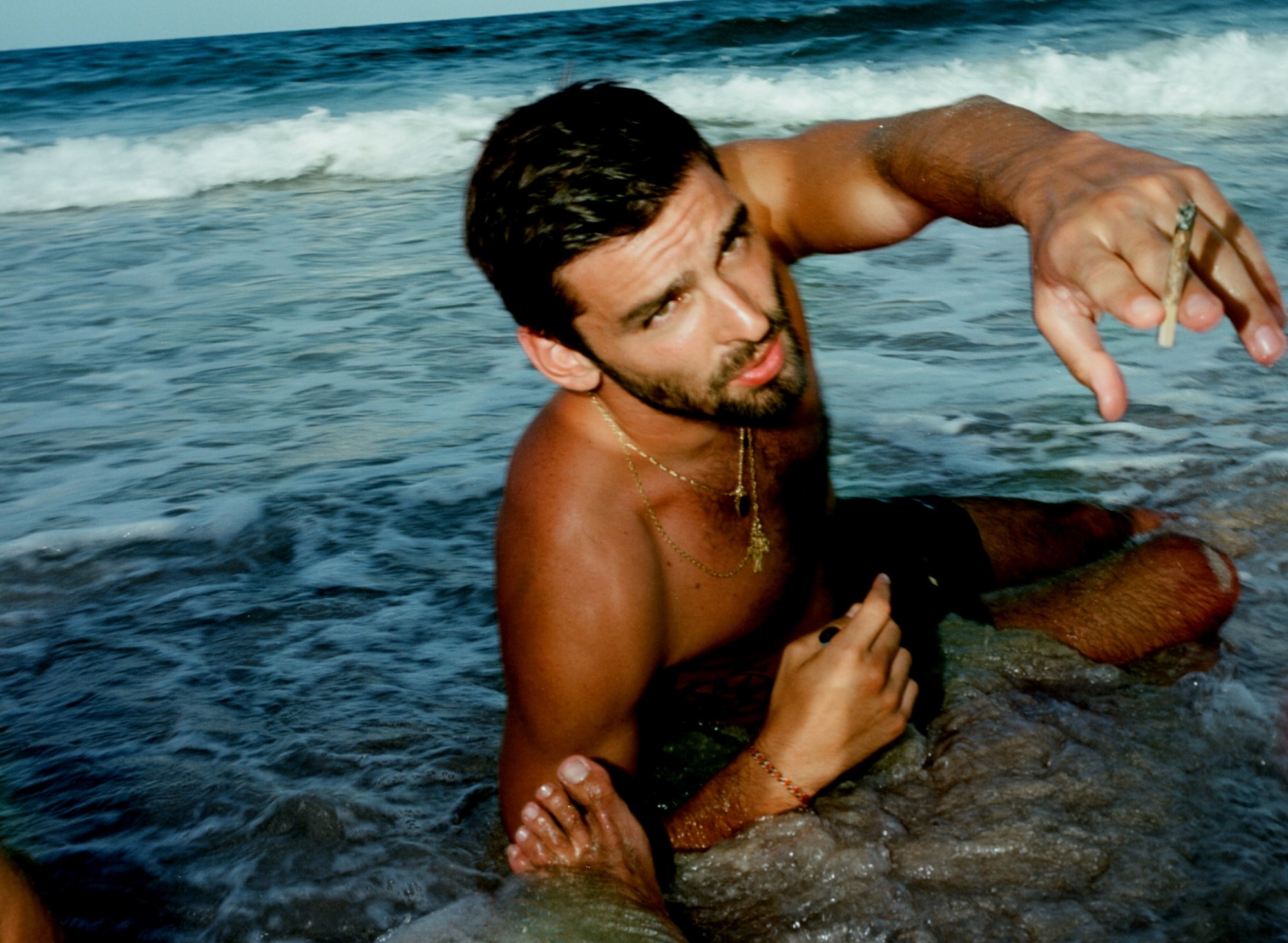
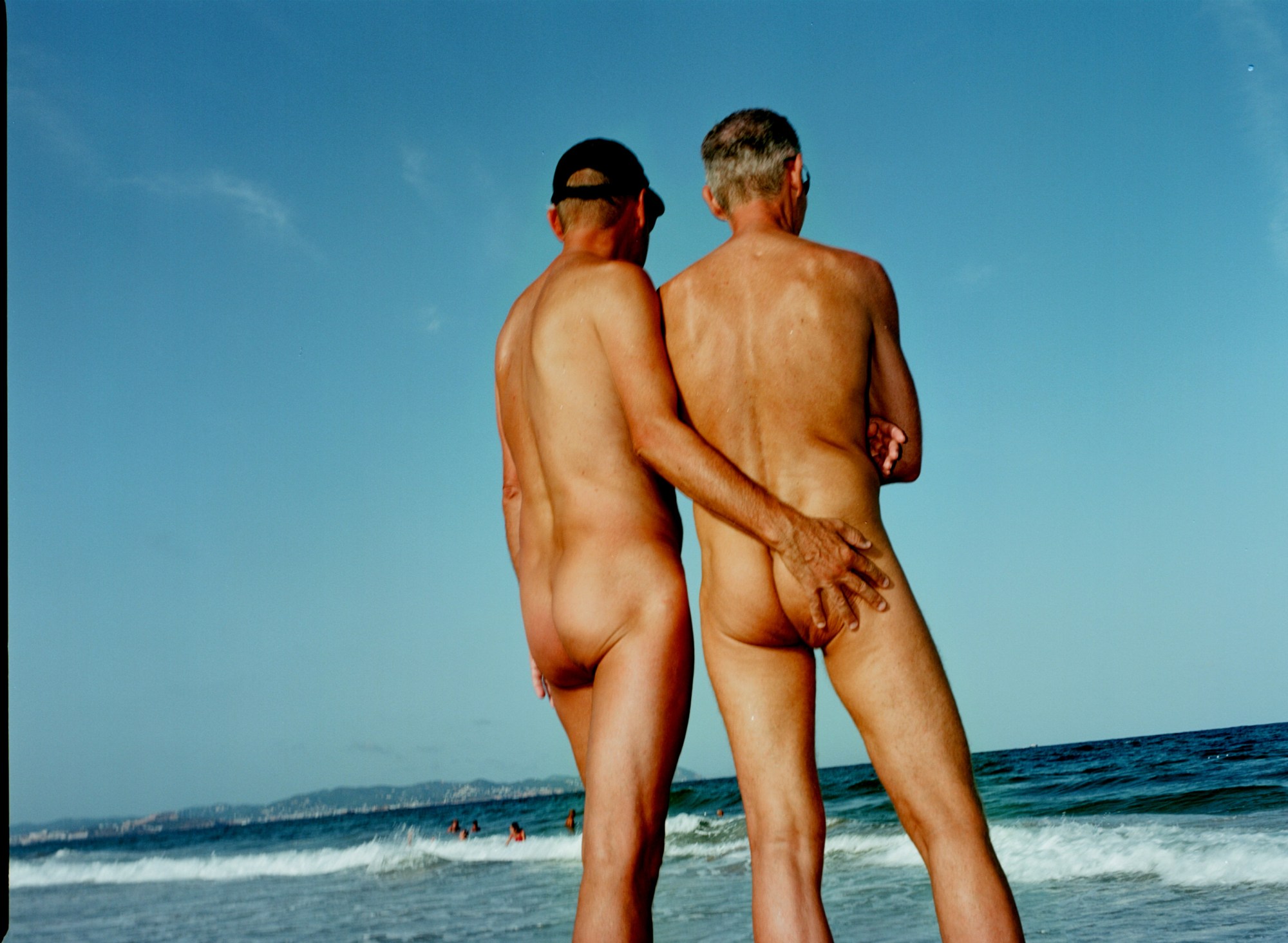
Credits
Photography Harry Carr
